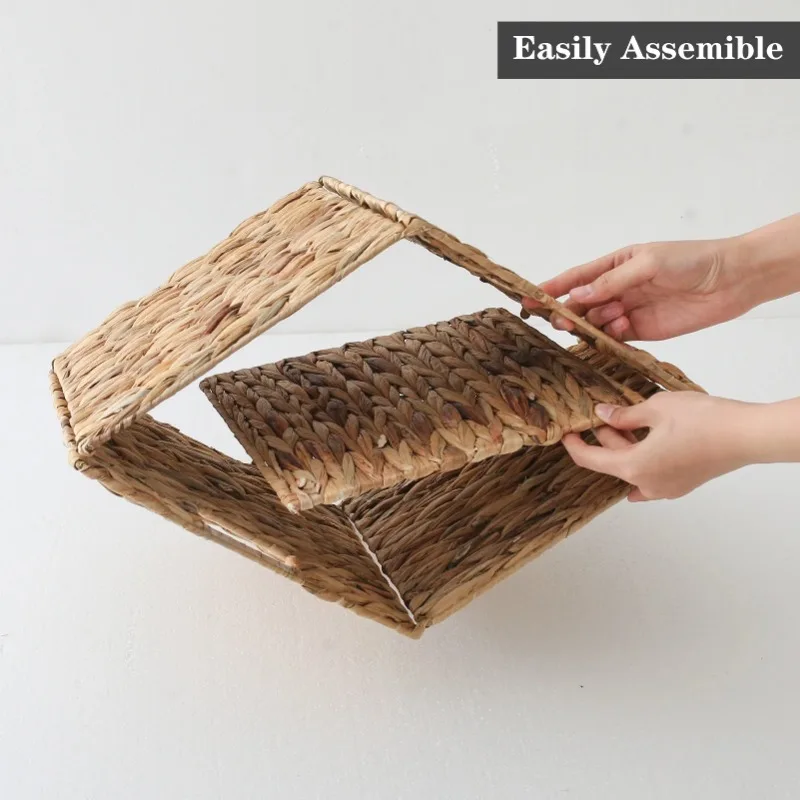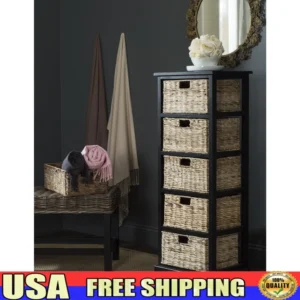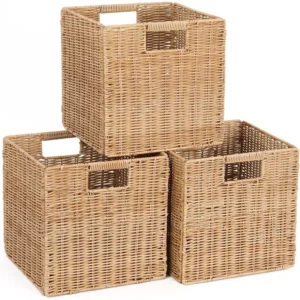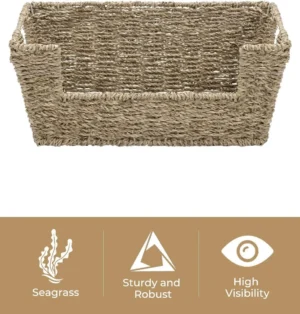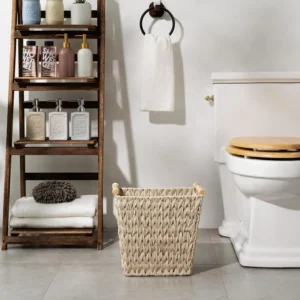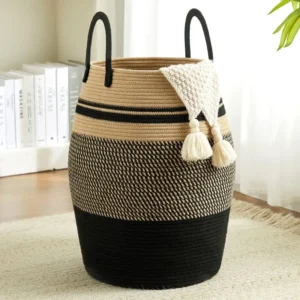Basketry stands as one of humanity’s oldest crafts, with archaeological evidence suggesting that woven containers predated pottery in many cultures. This ancient art form has evolved over thousands of years while maintaining its fundamental techniques. When people refer to “the 4 types of baskets,” they’re typically discussing the primary methods used to construct these versatile containers: coiling, plaiting, twining, and wicker. While baskets can also be categorized by their materials (such as reed, willow, or bamboo) or their intended purposes (storage, gathering, or ceremonial), understanding these four fundamental weaving techniques provides the foundation for appreciating basket craftsmanship in all its forms.
The artistry of basket weaving represents a beautiful marriage of functionality and aesthetic expression. Each technique produces distinct characteristics that affect not only how the basket looks but also how it performs. By understanding the real difference between basket styles and their construction methods, we gain deeper appreciation for these everyday objects that have served humanity throughout our existence.
Understanding Basic Basket Weaving Terminology
Before exploring each technique in detail, it’s helpful to understand the vocabulary that basket weavers use to describe their craft:
- Warp: The stationary or foundational elements of a basket that provide its structure (sometimes called spokes or stakes)
- Weft: The moving elements that weave around the warp to create the basket body
- Stakes/Spokes: Rigid materials that radiate from the base to form the basket framework
- Weavers: Flexible materials that intertwine with the stakes to create the basket walls
- Rim: The finished edge at the top of a basket
- Base: The bottom foundation of the basket
- Coil: A spiral of core material wrapped with a binding element
- Splice: The method of adding new material as weaving progresses
These terms appear across different basket weaving styles but may function differently depending on the specific technique being used. Understanding this vocabulary helps distinguish between the four primary basket types and appreciate the skill involved in creating each.
Coiling: The Art of Spiraled Construction
Coiling represents one of the most versatile and ancient basket-making techniques. This method involves wrapping a flexible fiber around a core material to create spirals that gradually build up the basket’s form. Unlike other weaving methods that typically require a pre-established framework, coiling creates the basket’s structure as it progresses.
The Coiling Process
The technique begins with a small bundle of core material (often grasses, pine needles, or reeds) that forms the foundation. The weaver then wraps this core with a more flexible binding material, stitching each new coil to the previous one to create a solid structure. As work progresses, the basket takes shape through the strategic placement and tensioning of these continuous spirals.
Materials and Characteristics
Materials for coiled baskets must include both a sturdy core element and a flexible binding fiber. Traditional materials include:
- Sweetgrass, beargrass, or pine needles for the core
- Yucca, willow bark, or split roots for the binding elements
- Natural or dyed fibers for decorative elements
Coiled baskets are known for their exceptional durability, tight construction, and water-resistance when closely stitched. They often feature distinctive patterns created through the binding technique or by incorporating colored fibers.
Cultural Significance
Some of the world’s finest examples of coiled basketry come from Native American traditions, particularly the intricate work of the Hopi, Apache, and Navajo peoples. In African traditions, particularly in countries like Ghana and South Africa, coiled basketry represents an important cultural heritage with distinctive regional patterns.
Tidy Treasure’s collection includes a variety of woven storage baskets that showcase the remarkable durability and distinctive appearance of coiled construction, bringing this ancient technique into modern homes.
Plaiting: The Checkerboard Weave
Plaiting represents perhaps the most intuitively recognizable basket weaving technique. This method creates the familiar over-under pattern that resembles a checkerboard or woven mat. Also called plain weaving, this technique involves interlacing elements of similar flexibility and thickness to create a sturdy, even pattern.
The Plaiting Process
In its most basic form, plaiting involves weaving elements over and under each other in a perpendicular arrangement. The process typically begins with establishing a base of parallel elements, then weaving perpendicular elements through them in an alternating pattern. The technique requires minimal tools but demands careful tension management to maintain even spacing and straight lines.
Materials and Patterns
Plaited basketry works best with materials that have consistent width and flexibility, such as:
- Split bamboo or rattan
- Prepared reeds or splints
- Palm fronds or pandanus leaves
- Paper or synthetic strips for contemporary applications
While simple plaiting creates the classic checkerboard pattern, variations produce more complex designs:
- Simple plaiting: The basic over-one, under-one pattern
- Twill plaiting: Over-two, under-two (or other combinations) creating diagonal patterns
- Hexagonal plaiting: Creating six-directional weaves for distinctive star patterns
Cultural Examples
Plaited baskets appear across nearly all basket-making cultures but are particularly associated with Southeast Asian traditions, Pacific Islander crafts, and many Indigenous American communities. The technique’s versatility allows it to create everything from simple mats to complex containers.
Understanding the differences between wicker and woven baskets helps clarify how plaiting relates to other construction methods, as plaiting represents one of the fundamental approaches to interlacing materials.
Twining: The Art of Twisting Weavers
Twining introduces a fascinating dimensional twist to basket construction. Unlike plaiting, where single elements pass over and under each other, twining involves pairs of flexible weavers twisting around vertical warps. This technique creates strong, versatile structures capable of remarkable variation in pattern and density.
The Twining Process
In basic twining, two flexible weft elements work together, twisting between rigid vertical warp elements. The weaver passes one weft element in front of a warp spoke while the other passes behind it, then twists the weft elements before moving to the next warp spoke. This twisting action locks the horizontal and vertical elements together firmly.
Materials and Characteristics
Twining works exceptionally well with:
– Flexible plant fibers like spruce roots, willow, and grasses
– Cedar bark and other split tree materials
– Commercial materials like waxed linen or cotton cord
The distinctive characteristics of twined baskets include:
– Exceptional strength and durability
– Ability to create watertight containers when tightly woven
– Versatility in creating both open and closed weave patterns
– Capability for complex decorative designs through colored weft elements
Variations in Twining
The basic twining technique has spawned numerous variations:
– Plain twining: Simple alternating twist between warp elements
– Diagonal twining: Creating slanted patterns by advancing the twist
– Three-strand twining: Using three weft elements for complex patterns
– Wrapped twining: One element remains stationary while another wraps around it
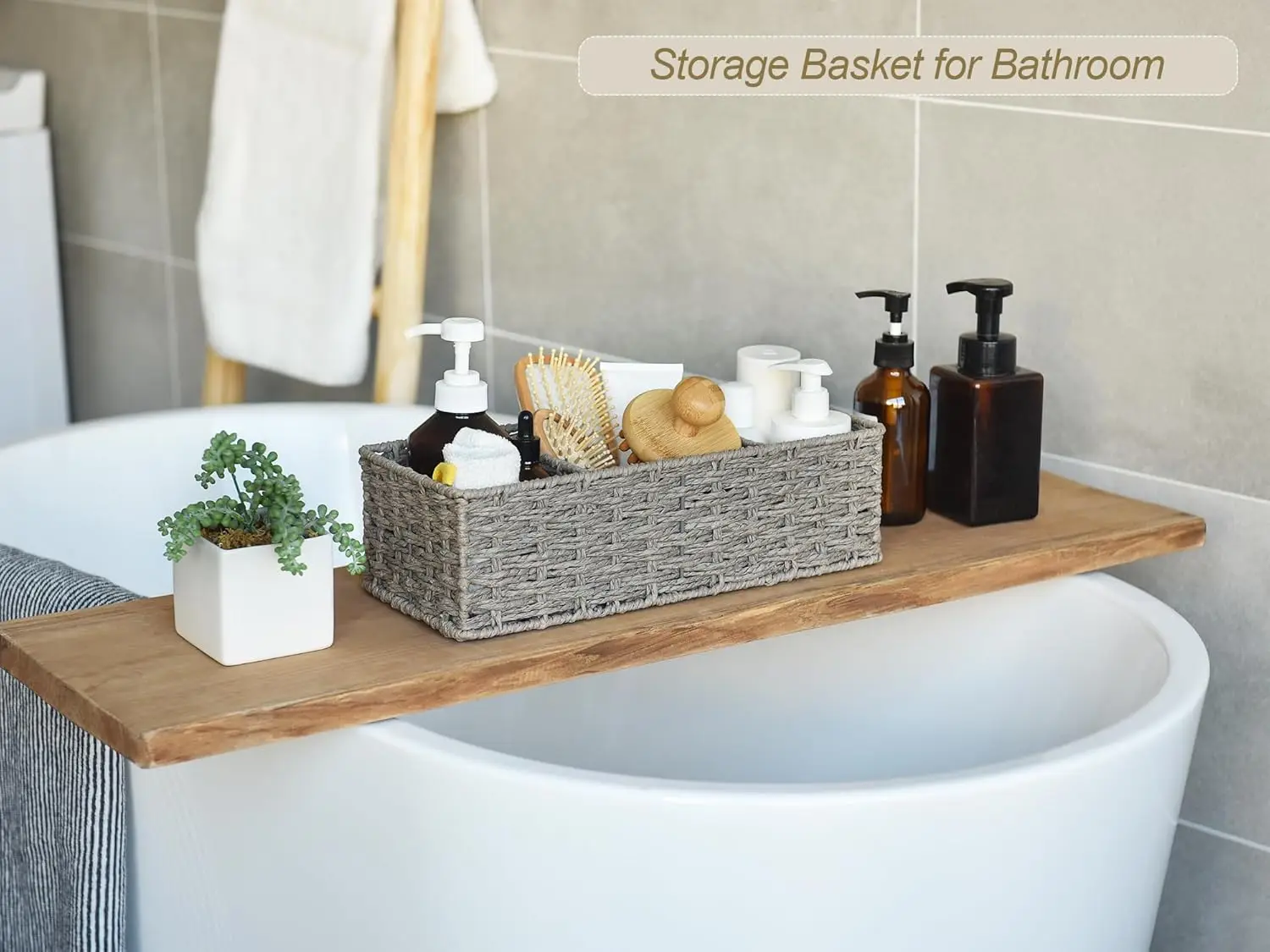
Tidy Treasure offers a selection of rattan baskets that often incorporate twining techniques, providing both beauty and structural integrity for everyday storage solutions.
Wicker: The Classic Stake and Strand Method
When most people picture a traditional basket, they’re likely envisioning wicker construction. This ubiquitous technique, sometimes called stake-and-strand basketry, creates the distinctive look associated with everything from picnic baskets to laundry hampers.
The Wicker Process
Wicker basketry begins with establishing a framework of rigid vertical elements (stakes or spokes) that radiate from the base. Flexible horizontal elements (weavers) are then interlaced among these stakes, typically in an over-under pattern. What distinguishes wicker from simple plaiting is the clear differentiation between the rigid structural elements and the flexible weaving materials.
Materials and Characteristics
Traditional wicker basketry typically uses:
– Willow, reed, or rattan for both stakes and weavers
– Heavier gauge materials for the structural stakes
– Thinner, more flexible materials for the weaving elements
Wicker baskets display several distinctive characteristics:
– Exceptional strength-to-weight ratio
– Visible structural framework
– Ability to create both tight and open weave patterns
– Versatility in size and shape
Weaving Patterns
Wicker basketry has developed numerous specialized weaving patterns:
– Randing: Simple over-one, under-one weaving
– Waling: A stronger weave where weavers cross multiple stakes
– French randing: Creating diagonal patterns for visual interest
– Fitching: Using multiple weavers of different widths together
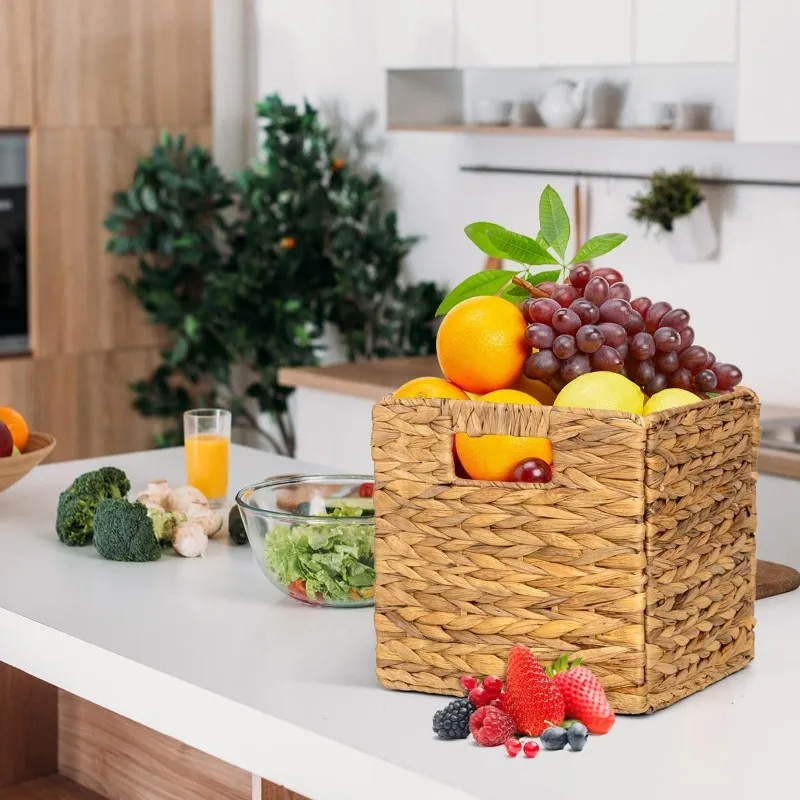
Tidy Treasure’s extensive collection of wicker baskets showcases the enduring appeal of this classic construction method for contemporary homes.
Materials Used in Basketry
The choice of material fundamentally influences both the basket’s appearance and function. Different weaving techniques work best with specific materials, creating a rich variety of possibilities:
Plant Fibers
- Grasses and Reeds: Ideal for coiling and wicker, these flexible materials create fine, tight weaves
- Willow: Perfect for wicker construction due to its combination of strength and flexibility
- Bamboo and Rattan: Offer exceptional durability for plaiting and wicker techniques
- Bark and Root Fibers: Provide strong binding elements for coiled baskets
- Palm and Leaves: Create distinctive textures in plaited baskets
Material Properties
The physical characteristics of materials determine their suitability for different techniques:
– Flexibility: Determines how tightly materials can be woven or coiled
– Strength: Affects durability and load-bearing capacity
– Width consistency: Impacts the evenness of the finished basket
– Moisture retention: Influences workability during construction
Understanding these properties helps explain the distinctions between wicker and woven baskets and why specific materials are traditionally associated with each technique.
From Function to Art: Modern Applications of Traditional Techniques
While baskets originated as practical tools for gathering, storing, and transporting goods, contemporary basket makers have elevated these ancient techniques to new artistic heights. Today’s basket artisans combine traditional methods with innovative approaches to create pieces that range from functional home decor to museum-quality fine art.
Modern applications of traditional basket weaving techniques include:
– Architectural elements like room dividers and lighting fixtures
– Home storage solutions that blend functionality with distinctive design
– Sculptural pieces that push the boundaries of form and material
– Sustainable alternatives to plastic storage containers
Many contemporary basket makers mix techniques, combining coiling with twining or incorporating non-traditional materials like wire, paper, or recycled elements to create unique expressions. These innovations maintain connections to ancient traditions while exploring new possibilities.

Tidy Treasure’s storage utility collection reflects this evolution, offering pieces that honor traditional techniques while meeting contemporary storage needs.
Choosing the Right Basket Type for Your Home and Needs
Different basket construction techniques create containers with varying strengths and characteristics. Understanding these differences helps you select the perfect basket for specific purposes:
For Heavy Items
Wicker and tightly twined baskets provide excellent structural support for heavier contents. Their sturdy construction distributes weight effectively, making them ideal for:
– Laundry and clothing storage
– Firewood or kindling holders
– Toy storage for children’s rooms
For Delicate Items
Coiled baskets with tight stitching offer superior protection for fragile objects. Their solid construction prevents snagging and provides excellent stability for:
– Jewelry and accessory storage
– Collectibles and keepsakes
– Sewing and craft supplies
For Decorative Display
All four techniques can create visually stunning baskets, but each offers distinctive aesthetic qualities:
– Coiled baskets provide smooth, continuous surfaces ideal for showcasing patterns
– Plaited baskets offer geometric precision and clean lines
– Twined baskets create textural interest and dimensional patterns
– Wicker baskets bring classic appeal and natural variation
Black Wicker Baskets, Rattan Storage Baskets, Tall Wicker Baskets, Wicker Shelf Baskets, Woven Storage Baskets
5-Tier Distressed Black Wood Frame Storage Tower with Removable Wicker Baskets for Home Organization$715.80 Select options This product has multiple variants. The options may be chosen on the product pageWicker Laundry Baskets, Woven Laundry Baskets, Woven Storage Baskets
$392.02 Select options This product has multiple variants. The options may be chosen on the product pageRattan Shelf Baskets, Rattan Storage Baskets, Small Wicker Baskets, Square Wicker Baskets
Square Plastic Wicker Storage Baskets Set of 3 with Collapsible Design for Cube Storage Organization$185.47 Select options This product has multiple variants. The options may be chosen on the product pageWicker Baskets with Handles, Wicker Storage Baskets, Woven Storage Baskets
$137.92 Select options This product has multiple variants. The options may be chosen on the product page- $119.02 Select options This product has multiple variants. The options may be chosen on the product page
Large Wicker Laundry Baskets, Tall Wicker Baskets, Woven Laundry Hampers, Woven Storage Baskets
$130.54 Select options This product has multiple variants. The options may be chosen on the product page
Tidy Treasure’s collection of wicker storage baskets provides options that combine beauty and functionality for various home storage needs.
Can Anyone Learn to Weave Baskets?
Basket weaving remains one of the most accessible traditional crafts, making it an excellent entry point for anyone interested in working with natural materials. Each of the four main techniques offers different levels of complexity:
Beginners often start with simple plaiting projects using prepared materials, which require minimal specialized tools. Coiled basketry also provides a good entry point, as the process can be paused and resumed easily. Basic twining and simple wicker projects become accessible after mastering fundamental techniques.
The most important qualities for new basket weavers are patience and attention to maintaining consistent tension. With practice, most people can create functional, beautiful baskets using any of the four traditional methods. Local workshops, online tutorials, and community education programs often provide excellent starting points for learning these ancient skills.
The versatile uses of wicker baskets in the home offer plenty of inspiration for practical projects that new weavers might attempt as their skills develop.
What Makes a High-Quality Basket?
Whether examining handcrafted artisan pieces or selecting commercial baskets for your home, several indicators help identify quality construction:
- Even weaving: Consistent spacing between elements indicates careful craftsmanship
- Tight construction: Elements should fit snugly together without gaps or looseness
- Smooth finish: Properly finished edges and rims with no sharp protrusions
- Sturdy base: A solid foundation that sits evenly without rocking
- Material quality: Well-prepared, consistent materials without weak spots
- Neat splices: Places where new material has been added should be nearly invisible
- Structural integrity: The basket should maintain its shape when lifted, even when full
For coiled baskets specifically, look for tight, even stitches and a firm feel. Plaited baskets should display consistent tension throughout the weave pattern. Twined baskets benefit from regular twists and secure warp elements. Wicker baskets should have firmly anchored stakes and evenly spaced weavers.
Tidy Treasure’s specialty baskets exemplify these quality characteristics, showcasing exceptional craftsmanship across various weaving techniques.
FAQs About Basket Types and Construction
How can I identify which technique was used to make a basket?
Look at the pattern of weaving elements. Coiled baskets have a spiral construction with visible stitching. Plaited baskets show a checkerboard or diagonal pattern of similar elements. Twined baskets feature paired horizontal elements twisted around vertical spokes. Wicker baskets have rigid spokes with flexible elements woven between them.
Which basket type is strongest?
Tightly constructed wicker and twined baskets typically offer the greatest strength for their weight. Their interlocked construction distributes weight effectively, making them suitable for heavier items.
Are certain basket types better for wet environments?
Tightly twined baskets and some coiled baskets with pitch or other sealants can be remarkably water-resistant. Traditional basket makers created watertight baskets for cooking and water transport using these techniques.
How do I care for different types of baskets?
All natural-fiber baskets benefit from occasional gentle dusting. Avoid prolonged exposure to direct sunlight, which can cause fading and brittleness. For cleaning, lightly dampened cloths work well for most baskets, though coiled baskets generally tolerate more moisture than open-weave styles.
Can the four basic techniques be combined in a single basket?
Yes! Many traditional and contemporary basket makers combine techniques for both practical and aesthetic reasons. A basket might have a coiled base transitioning to twined sides, or incorporate decorative twining on a primarily plaited structure.
Additional information about basket weaving techniques and applications can be found at the Folk School’s basket weaving resource.

